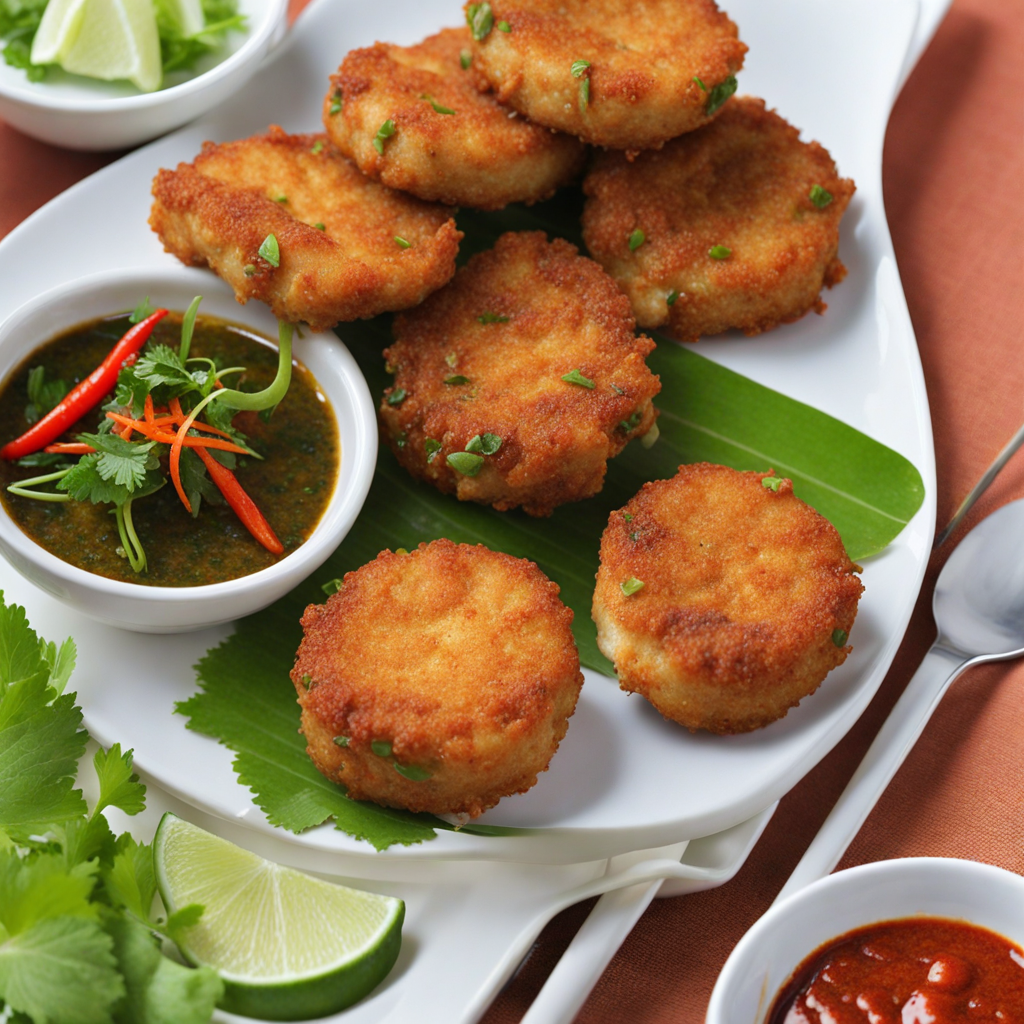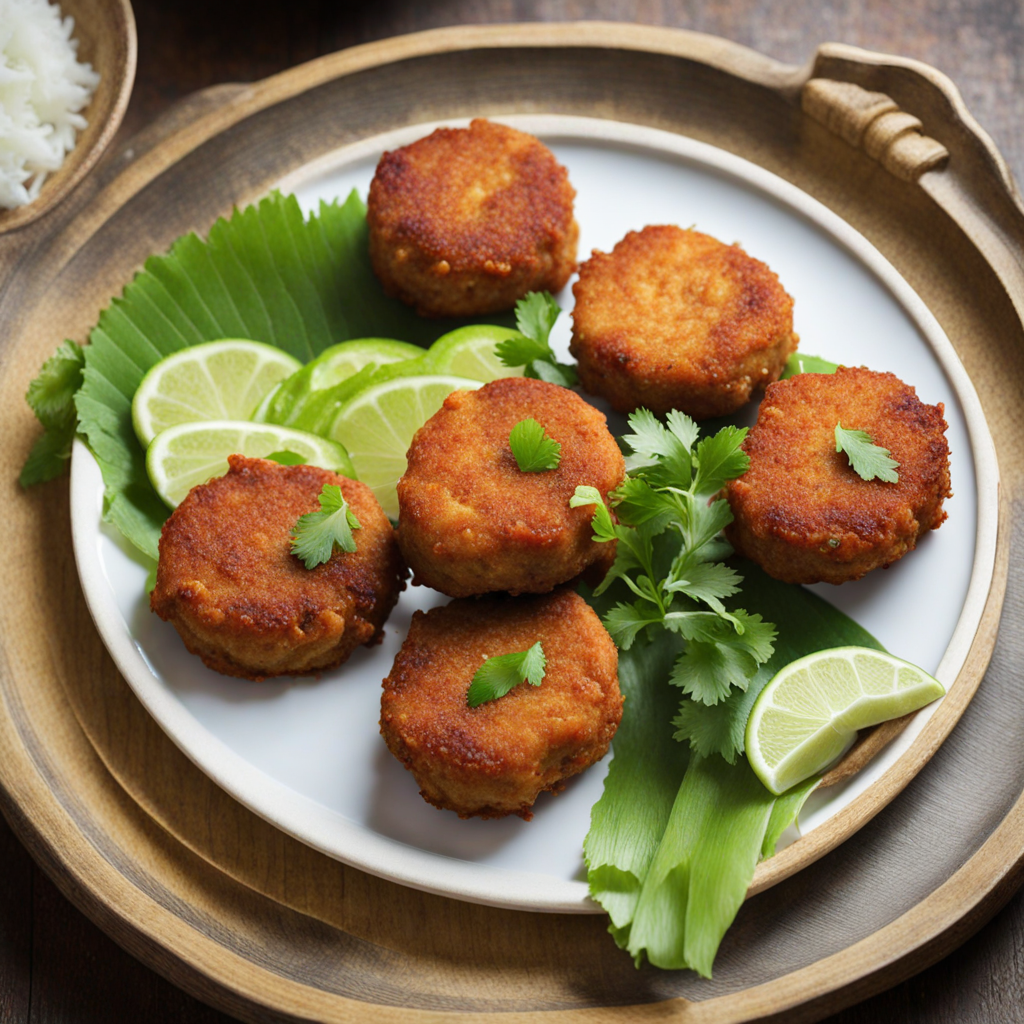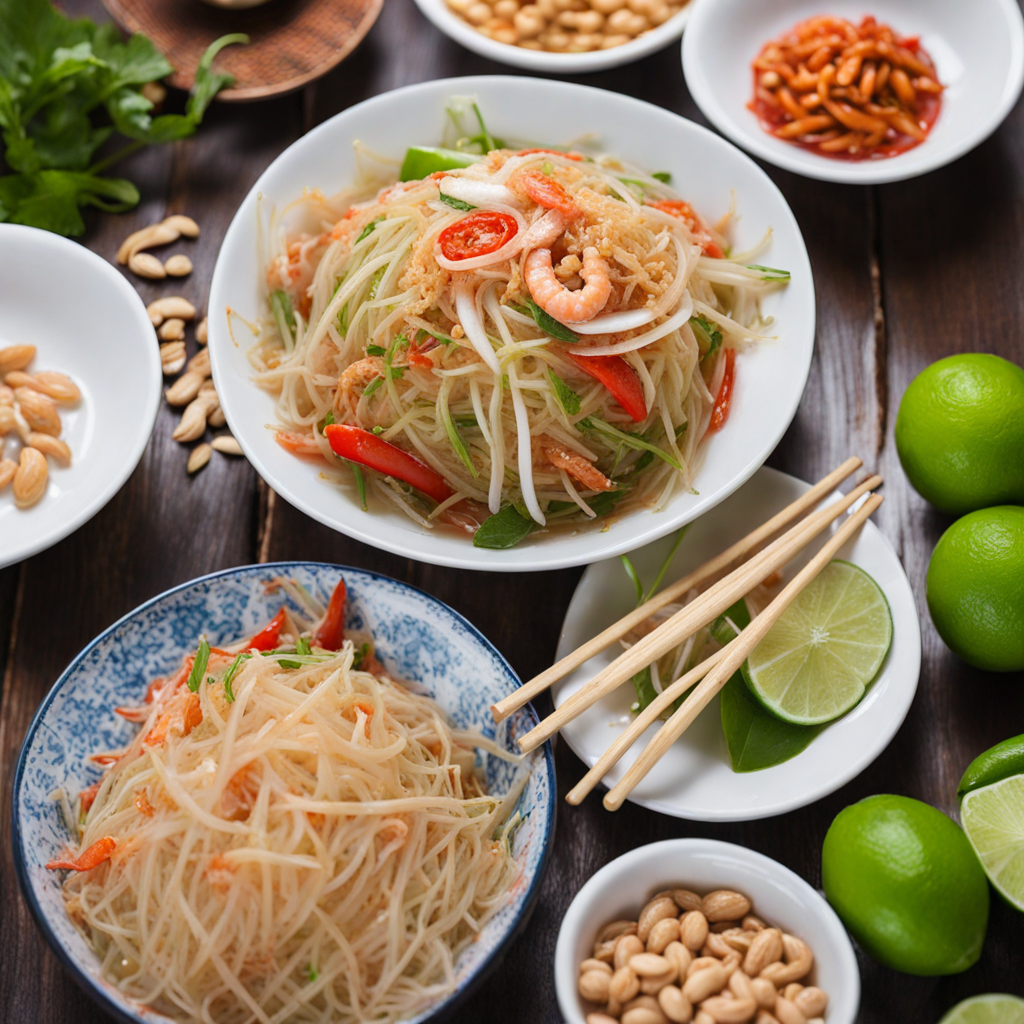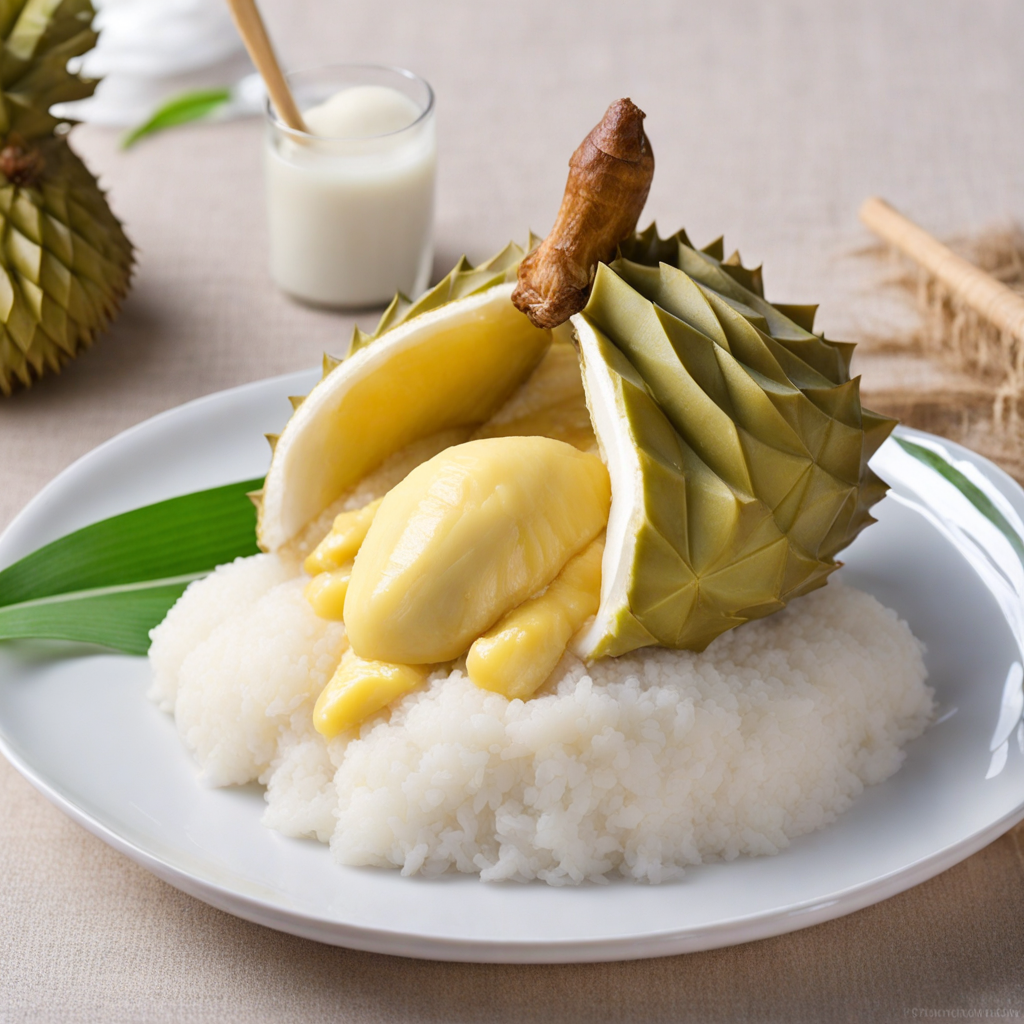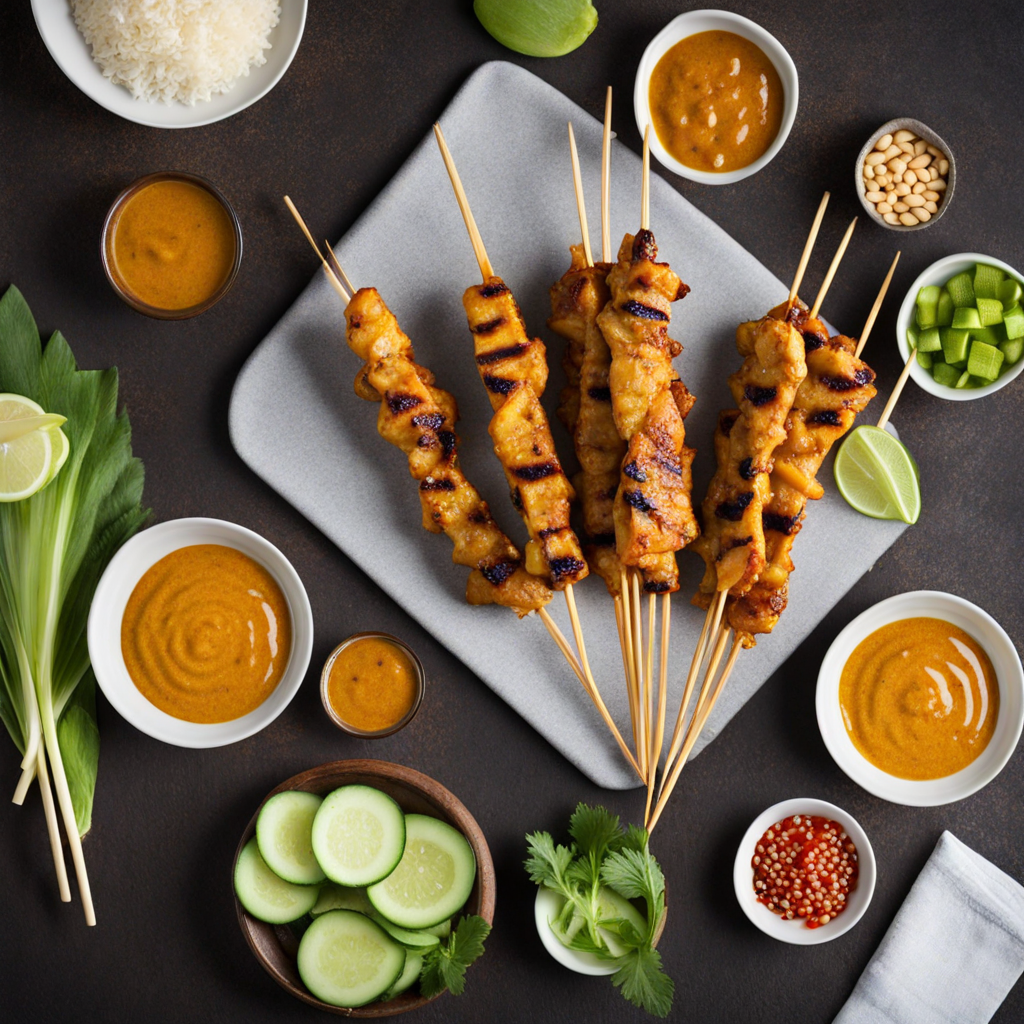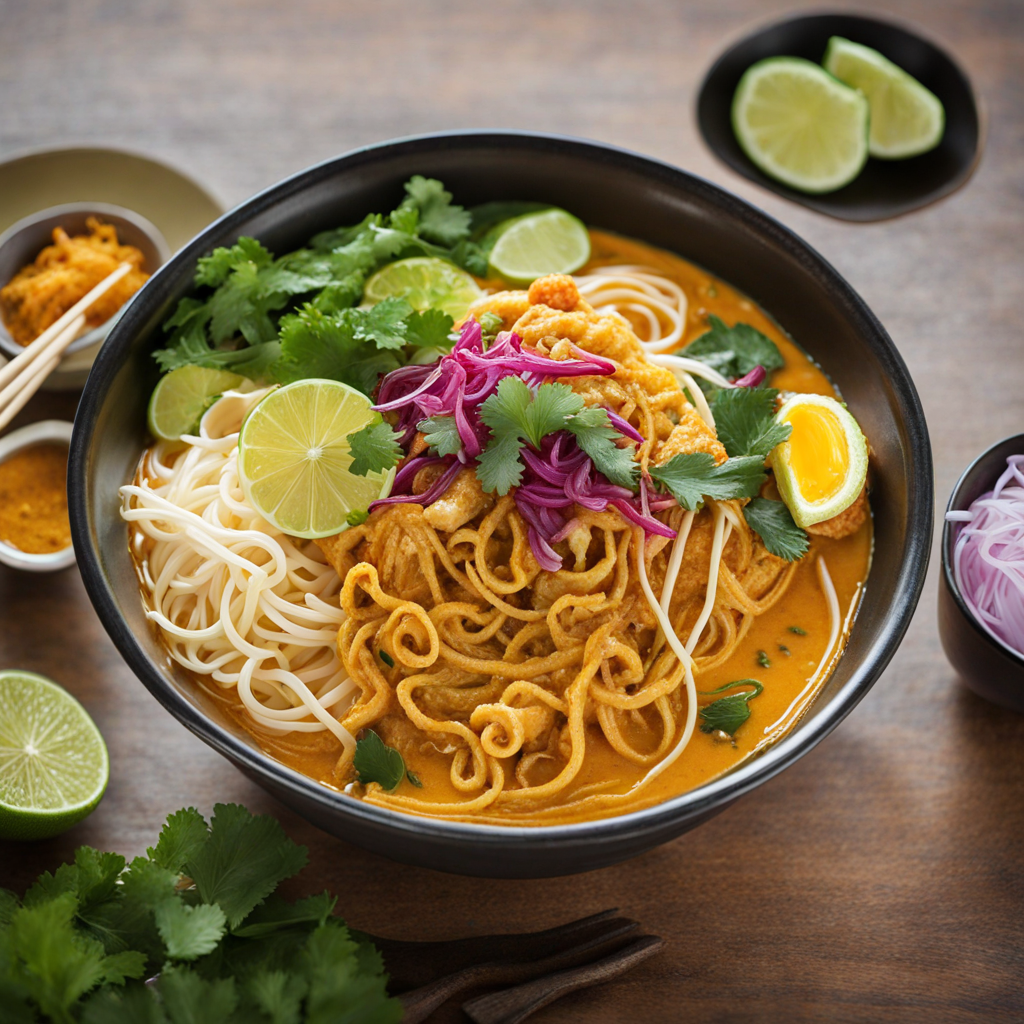Thai Fish Cakes
Thai Fish Cakes, known as 'Tod Mun Pla' in Thailand, are a delightful fusion of flavors and textures that capture the essence of Thai cuisine. These savory cakes are typically made from minced fish, often combined with a medley of aromatic herbs and spices such as kaffir lime leaves, red curry paste, and Thai basil. The result is a fragrant mixture that is both flavorful and fragrant, evoking the vibrant culinary culture of Thailand. Each cake is usually shaped into small patties, making them easy to fry to a perfect golden brown, creating a crispy exterior that encases a tender, juicy interior. When you take a bite of Thai Fish Cakes, you are greeted with a burst of umami flavors that are beautifully balanced. The freshness of the fish is complemented by the zesty lime and the gentle heat from the curry paste, while the herbs add an aromatic quality that lingers on the palate. These cakes are often served with a sweet and tangy dipping sauce made from a blend of sweet chili sauce and crushed peanuts, providing a delightful contrast to the savory fish cakes. This combination of textures and flavors makes each bite an exciting experience for the taste buds. Traditionally enjoyed as a popular street food snack or appetizer, Thai Fish Cakes embody the vibrant spirit of Thailand’s culinary scene. They can be found in various settings, from bustling night markets to upscale restaurants, each offering their unique twist on this beloved dish. Pair them with a side of fresh cucumber salad or some sticky rice to enhance the experience, and you’ll find yourself captivated by the deliciousness of this Thai classic, making it a must-try for anyone eager to explore new tastes.
How It Became This Dish
The History of 'ทอดมันปลา' (Thai Fish Cakes) #### Origins ทอดมันปลา, pronounced "tod mun pla," translates to "fried fish cake" in English. This beloved Thai snack has roots deeply embedded in the coastal regions of Thailand, where fishing has been a way of life for centuries. The dish primarily features ground fish mixed with a medley of aromatic herbs and spices, and then shaped into cakes or patties before being deep-fried to a golden perfection. The origins of tod mun pla can be traced back to the ancient maritime cultures of Southeast Asia. The Thai people, influenced by their geographical location, drew from both local ingredients and culinary practices from neighboring countries. Historical records indicate that fish cakes were also present in various forms across the region, including in Chinese and Indian cuisines, where fish was often combined with spices and herbs to create flavorful dishes. #### Cultural Significance Tod mun pla is more than just a snack; it represents the Thai philosophy of balancing flavors and textures. The dish often incorporates fish such as mackerel or tilapia, which are abundant in Thai waters. The use of fresh herbs like kaffir lime leaves, lemongrass, and galangal not only enhances the taste but also reflects the Thai reverence for fresh ingredients. In Thailand, food is a communal experience, and tod mun pla is often served as a part of street food culture. Vendors sell these fish cakes in bustling markets, where locals and tourists alike gather to enjoy the vibrant atmosphere. Accompanied by a sweet and spicy dipping sauce, these fish cakes are a popular choice for gatherings, celebrations, and casual meals, symbolizing the warmth of Thai hospitality. Beyond its culinary appeal, tod mun pla is significant in Thai culture as it showcases the resourcefulness of the people. Fish cakes exemplify how communities adapt to their environments, utilizing available ingredients to create nourishing and delicious meals. In rural areas, where fishing is a primary source of income, tod mun pla serves as an economical way to transform surplus fish into a satisfying dish, thereby reducing waste. #### Development Over Time As Thailand transitioned through various historical periods, so too did tod mun pla. The establishment of the Rattanakosin Kingdom in the late 18th century marked a period of significant cultural exchange, as trade routes opened up and influences from neighboring countries, such as Malaysia and Indonesia, began to shape Thai cuisine. The introduction of new spices and cooking techniques led to the evolution of traditional dishes, including fish cakes. Throughout the 20th century, modernization and urbanization transformed the way food was prepared and consumed in Thailand. Tod mun pla adapted to these changes, becoming a staple in urban street food markets. The rise of street food culture in cities like Bangkok brought about a new wave of innovation, with vendors experimenting with different types of fish, flavors, and frying methods. In addition to its street food heritage, tod mun pla began to find its way into Thai restaurants, both locally and internationally. Chefs started to elevate the dish, presenting it in more refined ways while still preserving its core flavors. The fish cakes became a popular item on restaurant menus, appealing to a wider audience beyond the local populace. The globalization of Thai cuisine in the late 20th and early 21st centuries further propelled tod mun pla into the culinary spotlight. As Thai restaurants proliferated across the globe, the dish became an ambassador of Thai flavors, showcasing the country's culinary diversity. Food enthusiasts and chefs began to appreciate the delicate balance of flavors in tod mun pla, leading to a resurgence of interest in traditional Thai cooking methods and ingredients. #### Modern Variations and Innovations Today, tod mun pla continues to evolve, with chefs and home cooks experimenting with variations that reflect contemporary tastes and dietary preferences. Innovations include the use of alternative proteins, such as plant-based options for vegetarians and vegans, as well as gluten-free adaptations. These modern interpretations maintain the essence of the original dish while catering to a broader audience. Furthermore, the proliferation of social media has allowed food lovers to share their experiences with tod mun pla across platforms like Instagram and TikTok, creating a renewed interest in traditional Thai snacks. The dish has become a favorite for food bloggers and influencers, who often showcase the vibrant colors and textures that make tod mun pla visually appealing as well as delicious. #### Conclusion In conclusion, tod mun pla is a dish that embodies the rich culinary heritage of Thailand. Its evolution from a simple coastal snack to a globally recognized dish signifies the resilience and adaptability of Thai cuisine. With its roots in ancient maritime cultures and its continued relevance in the modern culinary landscape, tod mun pla serves as a delicious reminder of the importance of tradition, community, and innovation in food history. As you enjoy a plate of tod mun pla, whether from a bustling street vendor or a fine dining establishment, you partake in a culinary journey that spans centuries and cultures. This fish cake not only tantalizes the taste buds but also tells a story of a people deeply connected to their land, their oceans, and their rich gastronomic traditions.
You may like
Discover local flavors from Thailand


